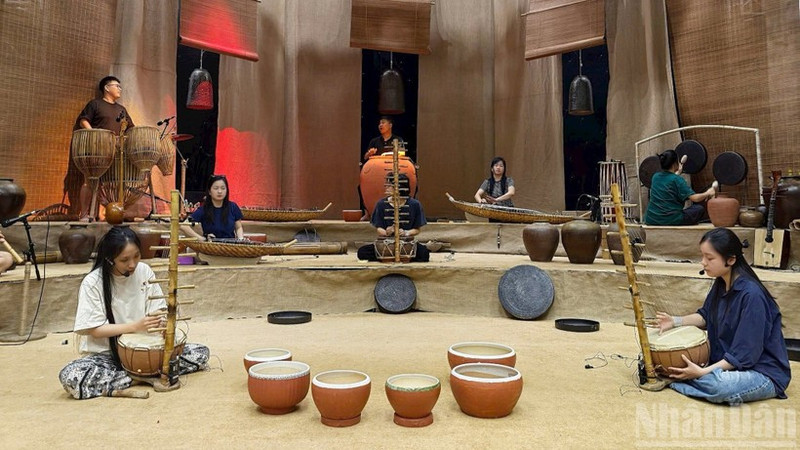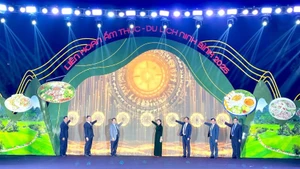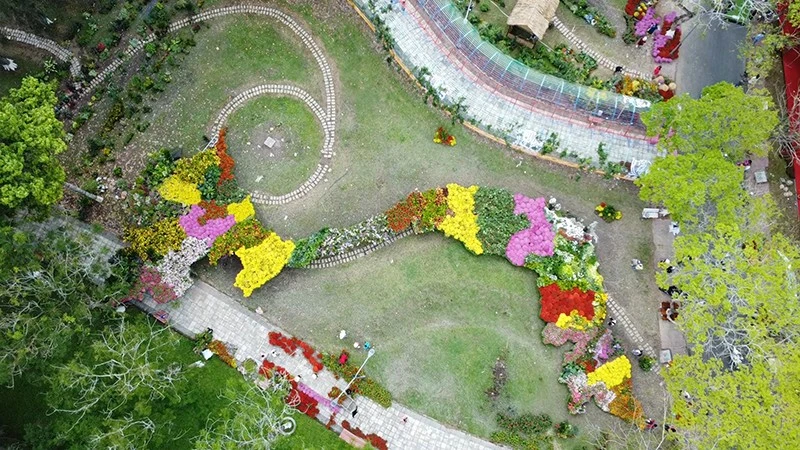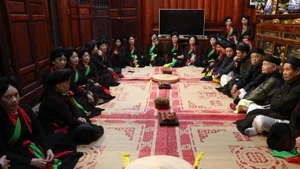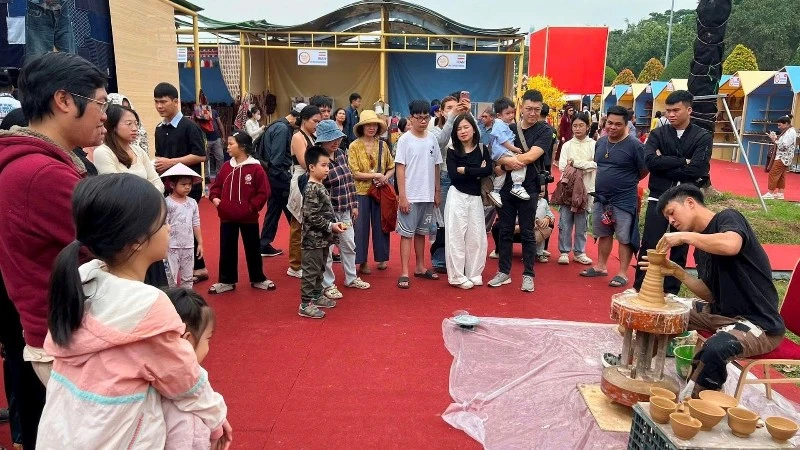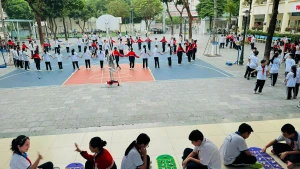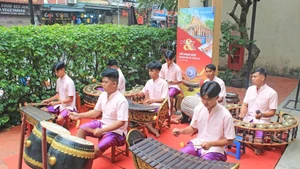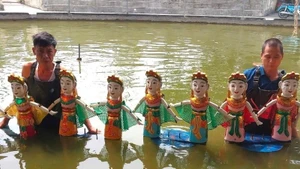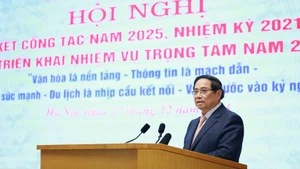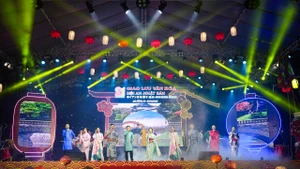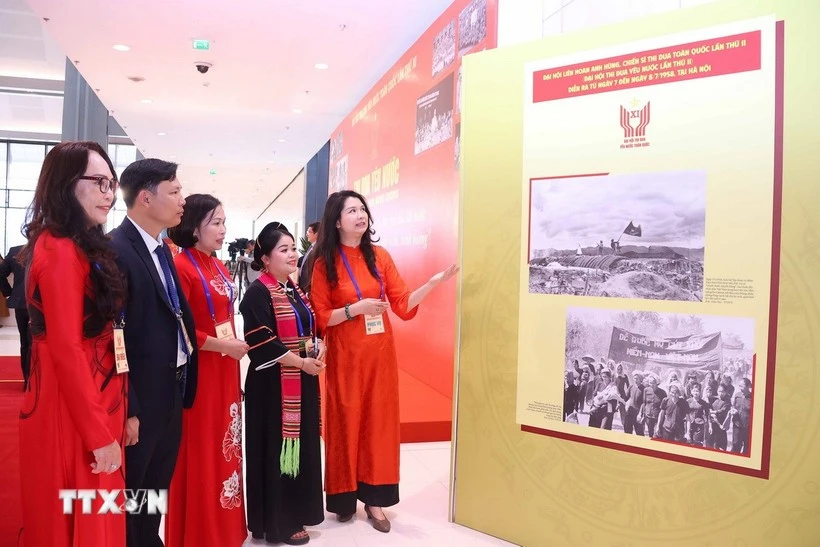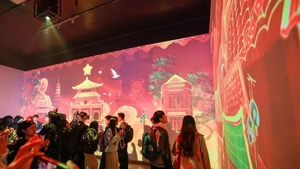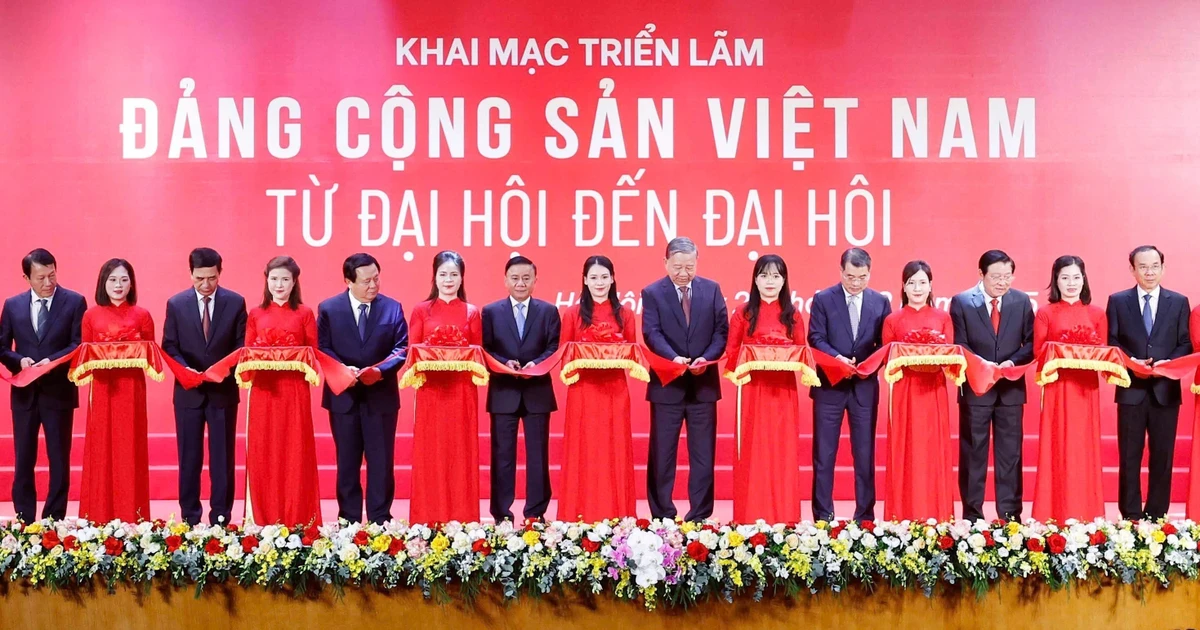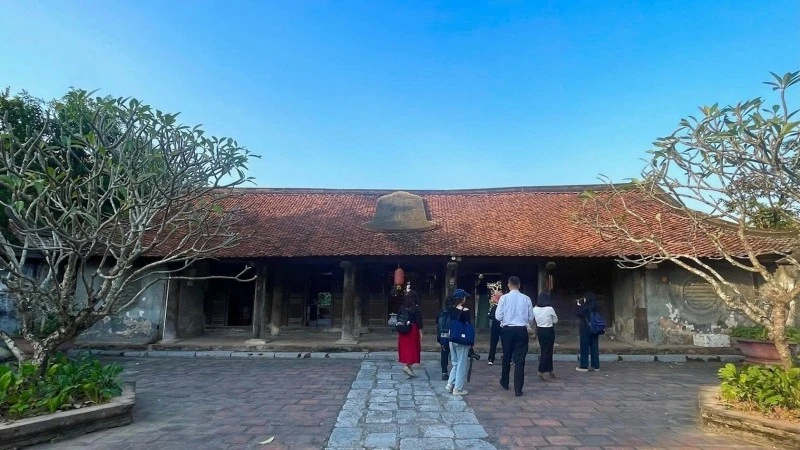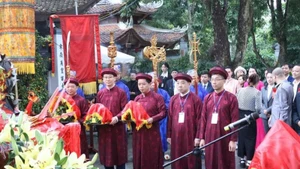In today’s musical landscape, where digital technology, stage effects, and international trends increasingly influence public taste, some young Vietnamese artists are deliberately returning to tradition as a lively wellspring of inspiration—choosing to engage, converse, and innovate continuously from it.
When tradition becomes artistic material
For more than 12 years, the group of artists known as Dan Do has steadfastly developed a new system of musical instruments made from ceramics and bamboo, combining them with experimental music, performance art, and contemporary artistic elements. From these simple, earthy materials, they have crafted a distinctive sonic language.
“We chose bamboo and clay because they are deeply rooted in the lives and cultures of many Southeast Asian communities. Exploring these traditional materials has given us a rich source of inspiration while also opening doors to deeper cultural discovery,” shared artist Nguyen Duc Minh, Dan Do’s artistic and musical director.
In early 2025, Dan Do launched a contemporary art project titled GOm Show, a bold move that begins its sonic journey with ceramics. Unlike conventional performances, GOm Show doesn’t tell stories through narrative, but instead opens a wordless musical world where emotion is guided through the sounds of clay drums, ceramic string instruments, earthen bells, and spinning pottery.
“Ceramics are earth, water, and fire. GOm doesn’t retell—it awakens. The pottery resonates like a part of Vietnamese memory, telling stories through sound rather than words,” Minh emphasised.
Crafting musical instruments from ceramics is a challenging choice: ceramics are fragile, their sound is unstable, non-repetitive. Yet, this very unpredictability gives each performance its unique character. In GOm Show, each artist explores sound, listens to vibrations, tonal reverberations, and resonance to find their most fitting mode of expression.
“We don’t compose sheet music for performers to follow. Instead, we create an experimental environment where each person discovers their own artistic voice. Every show is a creative process—no performance is ever the same,” said artist Dinh Anh Tuan, co-founder of Dan Do.
What sets GOm apart is not only its sound but also its innovative organisational model. As a collective project, it brings together multiple generations of artists—from its founders to emerging young talents.
According to Quynh Mai, one of Dan Do’s younger members, the ceramic instruments were initially unfamiliar, and the working methods differed from any art model she had previously encountered. But it was the sincerity and dedication of the older artists that convinced her she was on the right path.
Quynh Mai did not hide the difficulties of rehearsal. Ceramic instruments are extremely fragile, requiring meticulousness and patience. Each practice session was not only about honing technique but also a journey of learning, creativity, and self-reflection. “We’re not just learning to perform. Each of us has to find our unique voice within the sounds of ceramics. It’s demanding—but also deeply joyful,” she shared.
GOm Show is more than a music project; it is a creative model with a strong community spirit. Production director Nguyen Phuong Lai explained: “We selected dozens of applicants from across various provinces and cities—from those with formal music training to others simply driven by passion. Through multiple trials, the group now has 10 members, each with a specific role in the overall creative structure.”
GOm Show was held at the Ha Noi Opera House on June 28 and 29. Following that, the group plans to hold regular performances at an arts space in central Ha Noi, targeting both domestic and international audiences. Beyond music, the group is also developing a new project using wood, integrating kinetic stage design, body performance, and lighting—continuing their journey of exploring and spreading traditional values.
A legacy to preserve and continue
Another standout example of creative engagement with traditional culture is young artist Ly Mi Cuong. Born in Lung Phin Commune, Dong Van District, Ha Giang Province, Cuong grew up surrounded by the sounds of the khen (panpine), the flute, and H’Mong folk songs. At 15, he moved to Ha Noi alone to study music, passing the entrance exam to the National Academy of Music. Since then, he has brought ethnic music to major stages. “I don’t want ethnic music to live only in museums or festivals. I want it on modern stages—so young people can feel close to it and proud of it,” Cuong shared.
In the 2023 Thanh Canh project, Cuong collaborated with artist Bao Trung (a vocal sound artist specialising in beatboxing) and music director Nguyen Quoc Hoang Anh to create a multimedia performance where the sound of the H’Mong khen merged with beatbox rhythms. “When Cuong plays the khen, I use my voice as the sonic foundation. It feels like a conversation—without words. Sound becomes the language,” said Bao Trung.

Beyond performance, Ly Mi Cuong actively inspires youth in highland regions. He regularly organises meetups and workshops for students and teenagers in Ha Giang, encouraging them to get familiar with traditional instruments and take pride in their cultural identity.
Cuong also serves as a community connector, founding and running H’Mong Culture—a student group in Ha Noi devoted to preserving and promoting traditional values through music, performance, and cultural activities.
Cuong’s current personal project Not Si is an educational initiative aimed at H’Mong youth, introducing them to traditional music. In cooperation with local cultural officers, he organises classes, produces materials, and helps young children explore instruments. Many of them can now play the flute, mouth harp, and show a natural love for ethnic music.
“In today’s globalised world, a young H’Mong person deeply concerned with preserving their cultural heritage is truly admirable. Cuong is not only talented but also deeply devoted to his homeland,” commented artist Nguyen Quoc Hoang Anh.
Stories like that of Ly Mi Cuong show that tradition is not merely a memory to be preserved—it is a living material for the younger generation to explore and spread. Through projects that fuse tradition and modernity, today’s young artists are revitalising heritage with innovative, deeply personal approaches.
